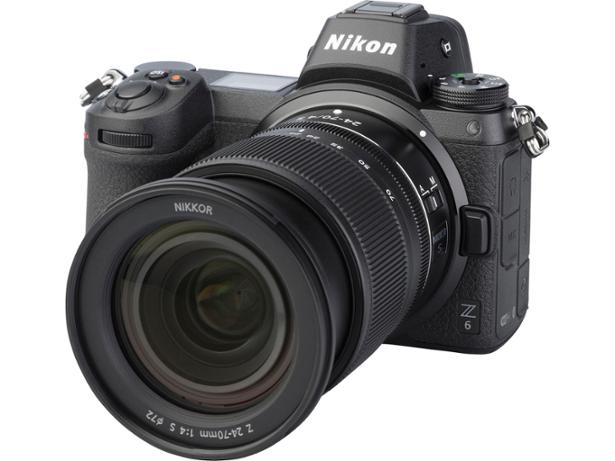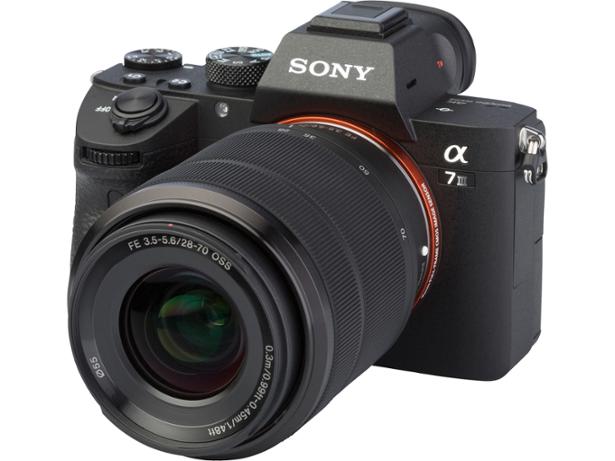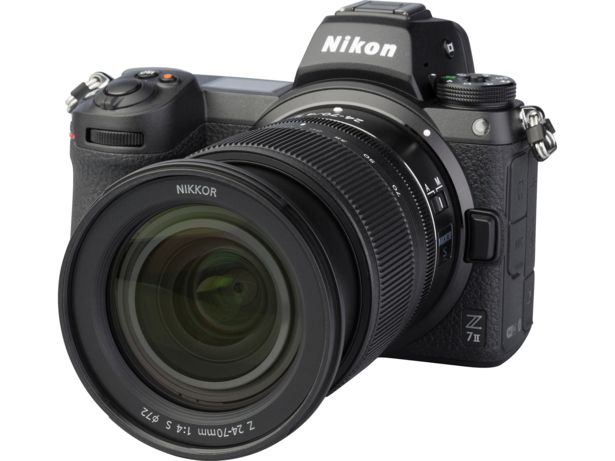By clicking a retailer link you consent to third-party cookies that track your onward journey. If you make a purchase, Which? will receive an affiliate commission, which supports our mission to be the UK's consumer champion.
How to buy a digital camera

Yes, you can use your phone's camera to take snaps. But if you really want to take great pictures, a standalone digital camera still offers you a level of quality and functionality that only a dedicated camera can provide.
Digital cameras come in different varieties, each with their own advantages and drawbacks. Whether you're an intrepid adventurer, a hobbyist who wants to edit and share high-resolution photos, or a first-timer who wants a jack-of-all-trades camera, there's something for you.
Here, we will tell you what you need to know to choose the right type of camera, plus how much you should expect to spend.
Looking for a cheap camera to start with? Read our guides to the best DSLR and mirrorless cameras and the best compact cameras to snatch a model that won't break the bank.
What types of camera are there?
- Compact cameras have fixed lenses that you can't remove. They're lightweight models designed for people who are travelling or who want a camera that's easy to use - hence their 'point-and-shoot' nickname. Some compact cameras are water resistant and can withstand conditions like being submerged in water, dusty settings, and long drops. These are called 'waterproof', 'tough' or 'action' cameras. Check out our guide to the best compact cameras.
- DSLR cameras have interchangeable lenses. This means you can detach the bundled lens and attach others for different focal lengths - for example, you might want to swap out a zoom lens for a macro lens that can offer an ultra-close shot. DSLRs are the most traditional style of digital camera and are quite clunky. They have a system of mirrors inside to give you a real-time preview of the image. Visit our guide to the best DSLR cameras.
- Mirrorless cameras are the newer style of interchangeable lens camera. They're lighter than DSLRs because they don't have mirrors inside - instead, they preview your image electronically as light hits the sensor. Their drawback is that their batteries drain quicker than DSLRs. Most new high-end cameras are mirrorless cameras now. Take a look at our guide to the best mirrorless cameras.
- Bridge cameras are a link between compact cameras and interchangeable lens cameras. They work like DSLR and mirrorless cameras, offering lots of settings and zoom lenses with long maximum focal lengths, but like compact cameras, their lenses are fixed and can't be changed. They're a good possible first-buy. Head to our guide on the best bridge cameras.
Read our digital camera reviews and filter your preferred type to get a model that suits you.
What camera type is best for me?

Simply want better photos than your phone can provide? Then buy a budget camera that reviews well after being put through our tough independent tests. If it's for a holiday, a compact camera will be a good choice because it's lightweight and easy to use.
If you're a novice or first-time buyer who wants to get into photography as a hobby, you'll want a camera that offers you control and the features you'll be using when you're a pro. A budget DSLR or mirrorless camera is highly recommended, but a bridge camera will also be a good option if buying expensive spare lenses isn't a priority for you.
As you grow in confidence with your photography, you’ll want to step away from the automatic settings and explore your camera's manual controls. Typically seen in premium compact, bridge, mirrorless and DSLR cameras, settings such as aperture, ISO levels and shutter speed allow for more control over the creative elements to your photos.
If you're planning on putting your camera through some punishment, then buy a compact camera that's rated for water resistance and which advertises itself as an action camera. These usually come in a thick body that you can tell is made for durability.
Already familiar with photography? You're best opting for a DSLR or mirrorless camera - ultimately, they offer the most control and the biggest sensors.
Mirrorless cameras are lighter and they travel better. But DSLR cameras come with better battery lives. If you're considering buying a second-hand camera, bear in mind that DSLR viewfinders never have any lag or delay. Buying brand new? Newer mirrorless cameras have used cutting-edge technology, like hybrid autofocus systems, to create nearly delay-free image previewing.
If you're looking for an action camera to capture pictures on the go, find out which we rated as the best action cameras.
What makes a good digital camera?
- Automatic shooting Cameras find the subject of your photo and change settings quickly to get your picture in-focus and properly exposed. They manage this with varying success - our lab tests reveal which models you should avoid.
- Autofocus (AF) This is the automatic setting that finds subjects - whether that's faces, objects or scenery - and pulls the focus onto the right parts of the photo. Good AF systems do this quickly and use artificial intelligence to work out what you're trying to frame. Bad AF systems are stubborn, pick the wrong things, and can't deal with moving subjects.
- Good handling Most digital cameras look and operate similarly, but small differences can make a big difference. Tiny buttons that are flush to the body, confusing menus that are hard to navigate, and bodies that don't fit snugly into your hand can create a lesser experience. We test cameras to check that they're easy to use and ergonomic - you don't want to miss out on a great shot because you're fiddling with buttons.
- Image stabilisation This helps reduce any blurriness in photos that’s caused by shaky camera movement. Some models have stabilisation built into the camera, while other camera types choose to build it into the lens. Some even have both, which work together to keep shots super blur-free. The best digital cameras will produce sharp and crisp images regardless of how difficult they were to capture.
- Low-light photo quality A poor digital camera will offer fuzzy low-light photos with imbalanced colours and little detail. Better models don't suffer so much in tough conditions.
- Megapixels (Mp) Our tests have proved that a higher megapixel count is no guarantee of quality when it comes to actual results. However, even a 5Mp camera can produce good prints at 4x6, 5x7 or 9x10 inches – the kind that easily fit in a photo frame. Most cheap digital cameras offer at least 14Mp.
- Recording video Just like still image quality, video recording depends on the camera type and the type of subjects you’ll be recording the most. Compact and bridge cameras are great for recording everyday activities, such as birthdays and holidays. But for best results, consider a mirrorless or DSLR camera that provides professional-quality 4K Ultra HD video.
- Sensor sizes This is one of the most important factors when purchasing a camera – the larger the sensor, the more light it can let in, which results in more detailed photos and video. DSLR and mirrorless cameras usually have the biggest sensors, with the largest being the Full-Frame sensor, with APS-C and Micro Four Thirds formats also offering very high quality. Smaller sensors, like 1-Inch and smaller, are common in phones and compacts, and create lower quality images.
- Zoom When you want to zoom in on faraway subjects, such as a perched bird, the optical zoom range is most important. With optical zoom, a camera’s lens magnifies an image for much sharper results – 5x optical zoom is the minimum acceptable standard. By comparison, digital zoom enlarges the pixels in an image as the shot is taken, reducing the quality of the shot.
If you're a novice looking for some quick and easy tips to improve your shots, take a look at our guide on how to shoot and edit photos like a pro.
How much do you need to spend on a camera?
A cheap compact camera only has to set you back around £100, but for good quality you might be spending over £400. There are even compact cameras that cost over £1,000 - a staggering amount for a fixed-lens camera - but these are for specialist uses.
Bridge cameras usually cost between £200 - £600, though we've tested models that cost between £600 - £1,000+ which come with superzoom lenses for far-distance shooting. Bridge cameras are generally cheaper than high-end DSLR or mirrorless models because they sacrifice swappable lenses for lower costs.
The DSLR and mirrorless market is large and diverse. You can buy budget cameras up to £750, though most fall in the range of £750 - £1,500. Premium cameras, of £1,500 and above, are aplenty, and these have cutting edge camera technology that offers best-in-class performance. But we've found Best Buys that are budget and mid-range too.
In general, more money buys you bigger sensors, the biggest factor of image quality, and other performance bonuses like good image stabilisation, smart autofocus systems, high-resolution video, and high-quality LCD and viewfinder displays.
Should I buy a second-hand camera?
We think that you should certainly consider it. Premium, high-end cameras, the likes of which you'll find populating a good proportion of our Best Buys, can be incredibly expensive. Shopping for a second-hand model can net you massive discounts on great cameras, and not only is it easier on your wallet; it's a much more eco-friendly way to spend your money.
The second-hand market for cameras and their accessories and lenses is huge, and you should be able to find pretty much any model available to buy used or refurbished. Because keen photographers tend to upgrade to ever higher-spec models over time, plenty of cameras are left as surplus, ready to be sold at a cut-down price.
Naturally, when buying second-hand there are a few things you need to watch out for. It can be daunting and difficult to understand, especially if you're new to shopping for used or refurbished products.
That's why we've put together this guide to buying a second-hand camera, to help you shop safely and sustainably for your next bargain camera.
Camera sensor sizes explained
Essentially, an image sensor is an electronic device within your camera that receives light through the lens, and then translates that into an image. The bigger the sensor, the more light the camera captures, and the better the quality of image produced.
For example, if you’re taking a landscape photo of Tower Bridge, the assumption is that you’ll include more of the bridge in the shot if you’re using a full-frame camera than a camera with a smaller sensor. But this is not the case. The size is relative only to the amount of light the camera captures.
Of all the camera types, DSLRs have the largest sensor size and, typically, better image quality. While a compact or bridge camera may have a similar megapixel (Mp) rating, the sensor is smaller, and it can’t let in the same amount of light.
If you place a mug and a bucket out in the rain, the bucket would catch more water, and an image sensor works on the same principle. The bigger the sensor, the more light it lets in.
Camera viewfinders explained

A viewfinder is the part of the camera you hold up to your eye and look through to preview an image before you snap. There are two types: optical (OVF) viewfinders, which are usually found only on digital SLR (DSLR) cameras, and electronic (EVF) viewfinders, which are common in compact, bridge and mirrorless cameras.
The differences between these types are extremely subtle, but OVFs benefit from showing you a completely live image, without any time lag from refresh rates or focusing issues. As such, they are more reliable for capturing lightning-fast shots. OVFs give a better clarity and dynamic range when composing a photo, but what you see in an EVF will be a closer match to what your final photo will look like.
The use of optical and electronic viewfinders is largely a matter of personal preference, and how advanced your photography is.
What digital camera accessories should I consider?
There's no shortage of ways to accessorise a camera, but before you splash out, it's important to know you actually need to.
- Batteries. Most digital cameras use lithium-ion (Li-ion) batteries which are rechargeable. Over the long-term these will lose capacity and run-down quicker, necessitating a purchase of another battery of the same size to insert. It's rare for cameras to use AA batteries, though you may find some that do. If you need to use AA batteries, it's better to go rechargeable. Read our rechargeable battery reviews to find the best.
- Lenses. DSLR and mirrorless cameras have swappable lenses, so you can detach the lens you bought the camera with and attach a different one. You might do this to get a better zoom range, be able to take macro photos, or use a telephoto lens for faraway shots. Your lens choice is just as important as the camera you choose. High-quality optics and build quality will provide the best image results and, with different lenses optimised for different shooting scenarios, it’s worth considering what you want to shoot before purchasing. As each camera brand has its own lens mount, you’ll have to check that the lens is compatible with your camera before buying.
- Tripods. These stand on three legs and have a mount at the top. They are necessary for long exposure photography where the shutter is exposed to light for a long time - this is because any slight movement will create motion blur. They're also good for removing any camera shake that image stabilisation might fail to mitigate.
- Monopods. These only have one leg, and they require you to hold them. But they're good if you can't stay stationary and you need to move around with the structure.
- Gorillapods. These are more maneuverable, consisting of ball joints which can be bent into position around fences, bannisters, and more.
- Memory cards. You can save your data onto these storage accessories. SDXC cards are the most common current version of the 'SD card' and the most likely option for your photo storage before you can transfer them to another device, like your computer for editing. Some cameras have multiple slots so you can have multiple cards for higher data storage.
- External flash. Many cameras have flash built-in, but some cameras, particularly high-end DSLR or mirrorless ones, don't come with flash and need an external flashgun mounted to the top (on what is called the 'hotshoe'). An external flash can be more powerful than a flash that comes with the camera, which is why some manufacturers rely on attached flashguns.
- Camera cases. A good camera case or bag will protect your camera from scratches, knocks, bumps and some drops. Some are also waterproof – good for that unexpected shower or extreme weather conditions.


